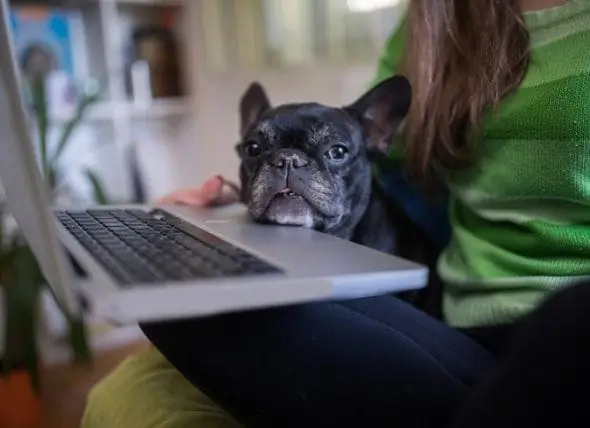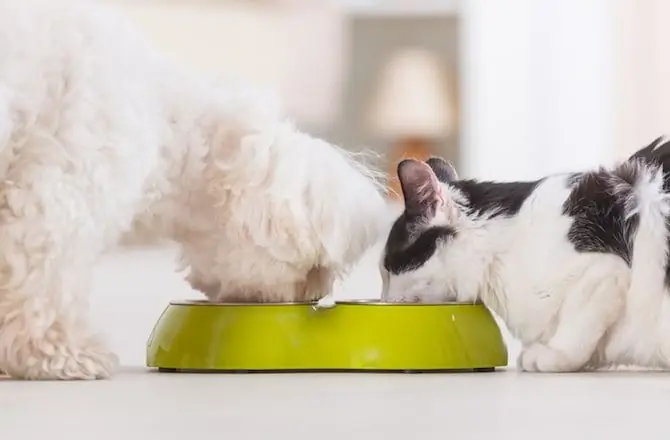
- Autor Daisy Haig [email protected].
- Public 2023-12-17 03:13.
- Naposledy zmenené 2025-06-01 06:48.
Takže na čo je vlastne ten trápny test z caca?
Je to dosť stresujúce, aby ste zadku vášho miláčika porušili plastovou tyčou, však? Aký to má zmysel?
Poviete si: Ak je cieľom dosiahnuť, aby bol môj miláčik zdravší a bez parazitov, budem dôverovať vášmu úsudku, ale musím povedať, že kontroly stolice sú akýmsi krutým a neobvyklým druhom trestu. Takéto poníženie nedostanem, kým nebudem mať muž a štyridsať, že? A výkaly nie sú také užitočné, však?
Ja hovorím: Pre začiatočníkov nemusí byť potrebné, aby váš maznáčik podľahol podlý prútiku. Čerstvá vzorka sa zvyčajne ľahko získa ráno (alebo popoludní) pred vašou každoročnou návštevou alebo kedykoľvek, keď vaše zviera trpí gastrointestinálnymi príznakmi. Nie je to také ťažké. A ak načasovanie nie je úplne v poriadku (pre dosiahnutie najlepších výsledkov by stolica nemala byť staršia ako hodina), vaša veterinárna nemocnica vám určite neodopiera právo na odber super čerstvej vzorky podľa vášho želania. Sľub.
A áno, fekálne vyšetrenia, aj keď sú pomerne lacné a rutinné, sú nevyhnutné. Ale ako tento príspevok preukáže, je tiež pravda, že nie všetky fekálne testy zachytia u vašich domácich miláčikov infekciu parazitmi. Preto môžu byť potrebné ročné a / alebo sériové vyšetrenia stolice.
Teraz k primárnemu cieľu testu:
Veterinári sú vždy v strehu pred parazitmi, ktorí by sa mohli dostať do gastrointestinálnych traktov vašich domácich miláčikov. Iste, aj my ľudia môžeme dostať parazity, ale náš moderný životný štýl má tendenciu byť menej priaznivý pre infekciu parazitmi. (Kedy si sa naposledy šňupal na dvore, perami k zemi, aby si mohol inhalovať mačaciu hovädziu alebo dve hovädzie?)
Áno, domáce zvieratá dostanú veľa parazitov. Tu je ukážka najbežnejších gastrointestinálnych parazitov, ktoré tu vidím [v nebi parazitov, ktoré je polotropické na južnej Floride]:
Škrkavky u psov a mačiek.
Múčne červy u domácich miláčikov
Bičíky u domácich miláčikov
Giardia u domácich miláčikov

Pečeňové motolice u domácich miláčikov
Pečeňové motolice u domácich miláčikov
coccidia in pets
i’ll not go into the gory details on each but you can click on the links and check out the info for a better understanding of how these parasites can potentially affect your pets and even your human family.
sure, pet-popular parasites don’t often infect humans in the so-called, “developed” nations all of you reading this likely live in, but that doesn’t mean it doesn’t happen. roundworms and hookworms are still a factor in humans in the us, as is giardia, which will give you the nastiest case of diarrhea you can imagine short of amoebic dysentery.
since veterinarians are also on the front lines when it comes to public health, consider that fecal exams are not just necessary for healthy pets, they’re essential for healthy humans, too, more so if your family members are very young children, very old adults or otherwise immunocompromised (transplant patients, hiv-positive humans, chemo recipients, etc.).
how do we identify these critters in the fecal exam?
the short answer: with a microscope.
the long answer: we take a tiny sample of your pet’s stool (very fresh is always best). a few grams is enough (think an eighth of a teaspoon if that’s easier). then we put it through one of three processes.
1. the smear: we take about a half gram of stool and smear it onto a microscope slide to search for parasites (and bacteria) directly. many times we’ll see them swimming about. finding evidence of parasites in a simple smear is often indicative of severe infection.
2. the float: this method relies on mixing the stool with a special solution. it filters out the big pieces of stool in a tube or other cylindrical vessel and allows the eggs and other small critters to float up to the top, buoyed by the solution’s specific gravity. a microscope slide’s cover slip is typically used to recover the floaters. some parasites, however, aren’t amenable to flotation. eggs seem to do best through this method.
3. centrifugation: spinning the heck out of stool in a centrifuge when it’s mixed in a sugar solution picks up about 50% more parasite eggs and oocysts than through flotation. therefore, i like this method best for worm eggs, giardia, and coccidia--though i’d never go without a smear. problem is, most hospitals don’t yet use this method. it’s more expensive than others and research demonstrating it’s much greater efficacy is fairly recent.
so now you know the truth: not all fecal exams are created equal. not only does this test rely on careful selection of materials and methods, it also requires a trained eye. in our practice, for example, one of our techs detects parasites about 50% more often than the veterinarians and other techs/assistants. (that’s why we also do floats so that she can check them all at her convenience when she comes back from her day off.)
it’s also true that even a parasite-infected animal will often not come up positive on a fecal test. human error and equipment choice are factors, but so is the parasite itself. sometimes they do not make themselves known in the stool. worms sometimes aren’t shedding their eggs and subclinical (low-grade or smoldering) infections may not reveal much, either.
again, that’s why it’s important to perform this test as often as is reasonable. for all dogs and cats at least three times during the first few months of life. i want to see at least two negative tests in a row, a month apart, before i’ll feel comfortable that my patient is parasite-free.
for adults, once a year is great--that is, unless they show gastrointestinal illnesses. in this case, serial fecal tests make sense--or at least one every time the symptoms recur until a definitive diagnosis is made (whether it’s parasites or something else).
ultimately, fecal tests are a critical component of our veterinary hat of tricks. doing without may seem like the economically wisest thing in the absence of gastrointestinal symptoms, but consider: parasites can wear pets down in ways you might not expect. and it’s never wrong to be too safe in the presence of diseases that may also affect your family. ‘nuff said.
Odporúča:
Ako Plánovať Starostlivosť O Vášho Miláčika, Ak Dostanete COVID-19

Rada veterinárnej lekárky Dr. Katy Nelsonovej, ako plánovať vaše domáce zviera v prípade, že dostanete COVID-19. Zistite, ako zaistiť bezpečnosť domáceho maznáčika pre prípad, že budete musieť urobiť karanténu
Je Jedlo Vášho Miláčika Bezpečné?

Nová štúdia v rámci projektu Clean Label Project sledovala viac ako 900 krmív pre psy a mačky a liečila viac ako 130 toxínov, ako je olovo a arzén. To, čo zistili, bolo mierne povedané otvorenie očí
Aký Vplyv Majú Mediány A Priemery Na Diagnostiku Rakoviny Vášho Miláčika

Pri diskusii o časoch prežitia u pacientov s rakovinou si lekári často zamieňajú slovo „priemer“za „medián“, ale v skutočnosti ide o dva odlišné výrazy s dvoma veľmi odlišnými významami
Upokojte Svojho Miláčika Po Operácii: Aký Je Váš Názor?

Zaujímalo vás niekedy, čo je potrebné na to, aby ste udržali domáce zviera v bezpečí po operácii? V niektorých prípadoch je to jednoduché, ako keď pokojné zviera môžete ľahko nechať v pohodlnej prepravke na dlhé úseky naraz. Nie, nie je to ideálne, ale je to spravodlivé. Koniec koncov, domáce zvieratá potrebujú šancu na vyliečenie a väčšina ich nebude dodržiavať bez fyzických obmedzení týkajúcich sa ich často škodlivého správania. & Nbsp
Aký Je Správny čas Na Sterilizáciu A Kastráciu Vášho Psa?

Pre väčšinu domácich miláčikov je dnes najbežnejším odporúčaním sterilizácia a kastrácia v čase alebo pred sexuálnou zrelosťou. To je to, čo väčšina z nás (veterinárnych lekárov) radí pri riešení problému drvivej krízy premnoženia, ktorú v tejto krajine domáce zvieratá trpia. Niektorí veterinárni vedci však
